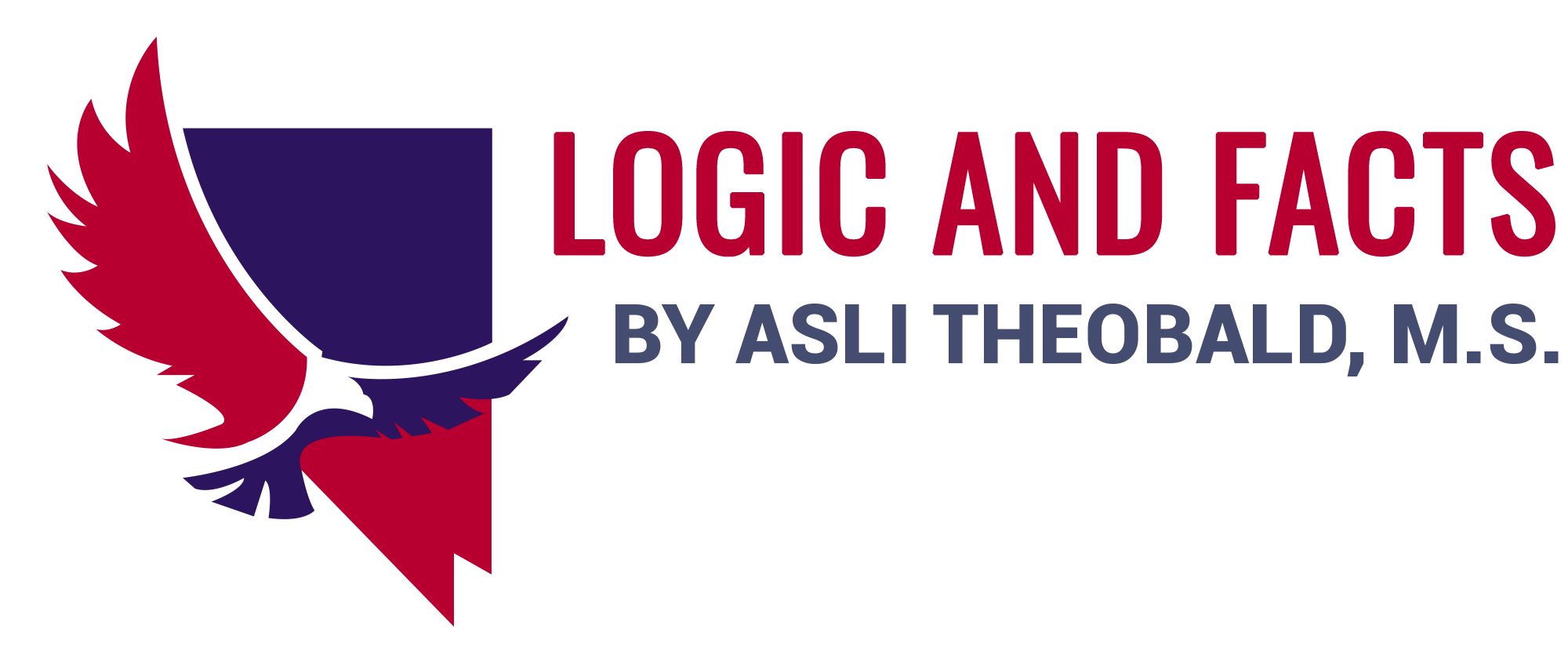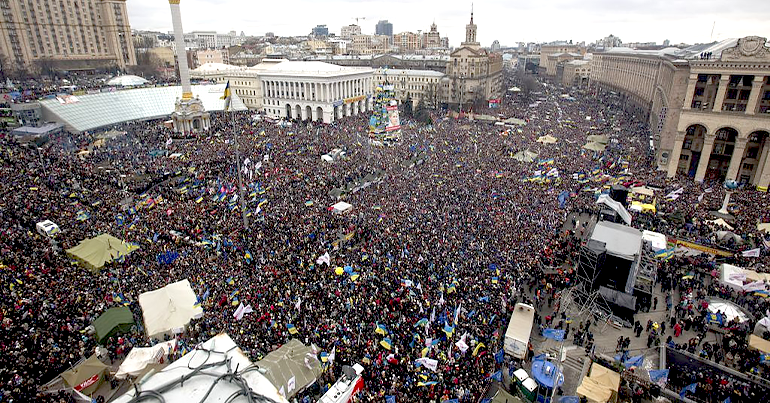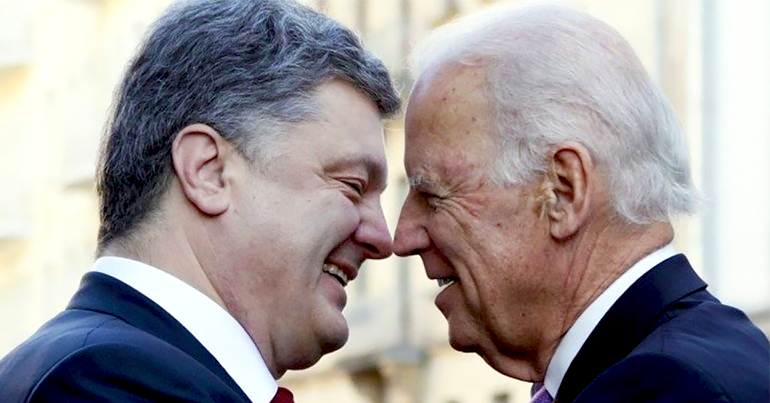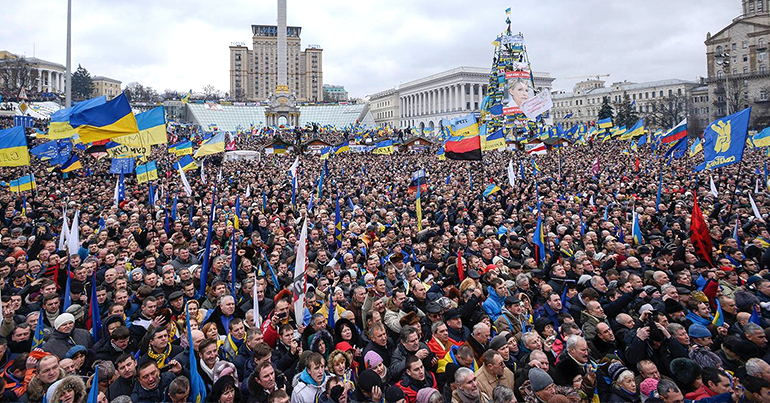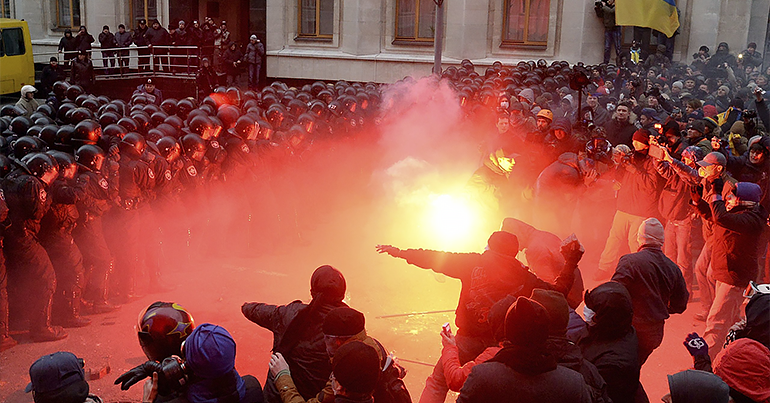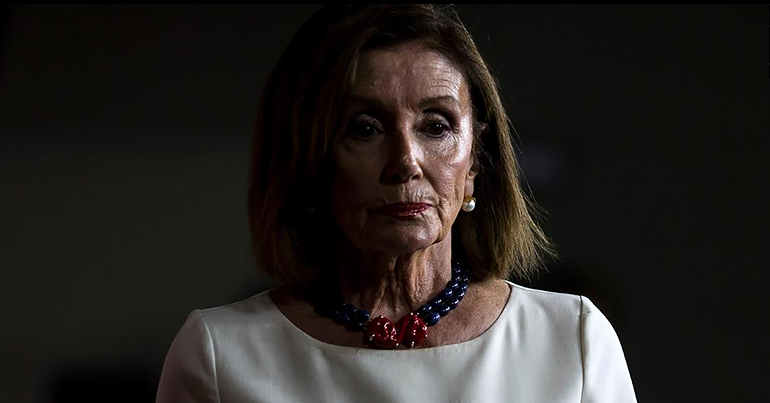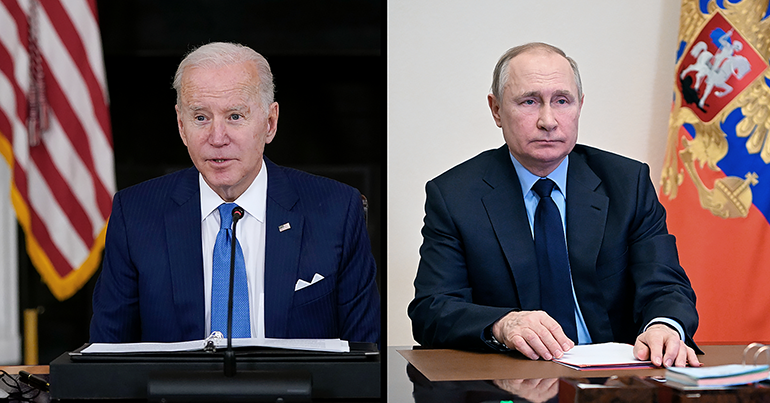PART 4: DESTABILIZING UKRAINE WITH PROTESTS AGAINST POLICE BRUTALITY
"Maidan leaders and several hundred trained provocateurs hid behind the backs of people" told Ukraine's fired General Prosecutor
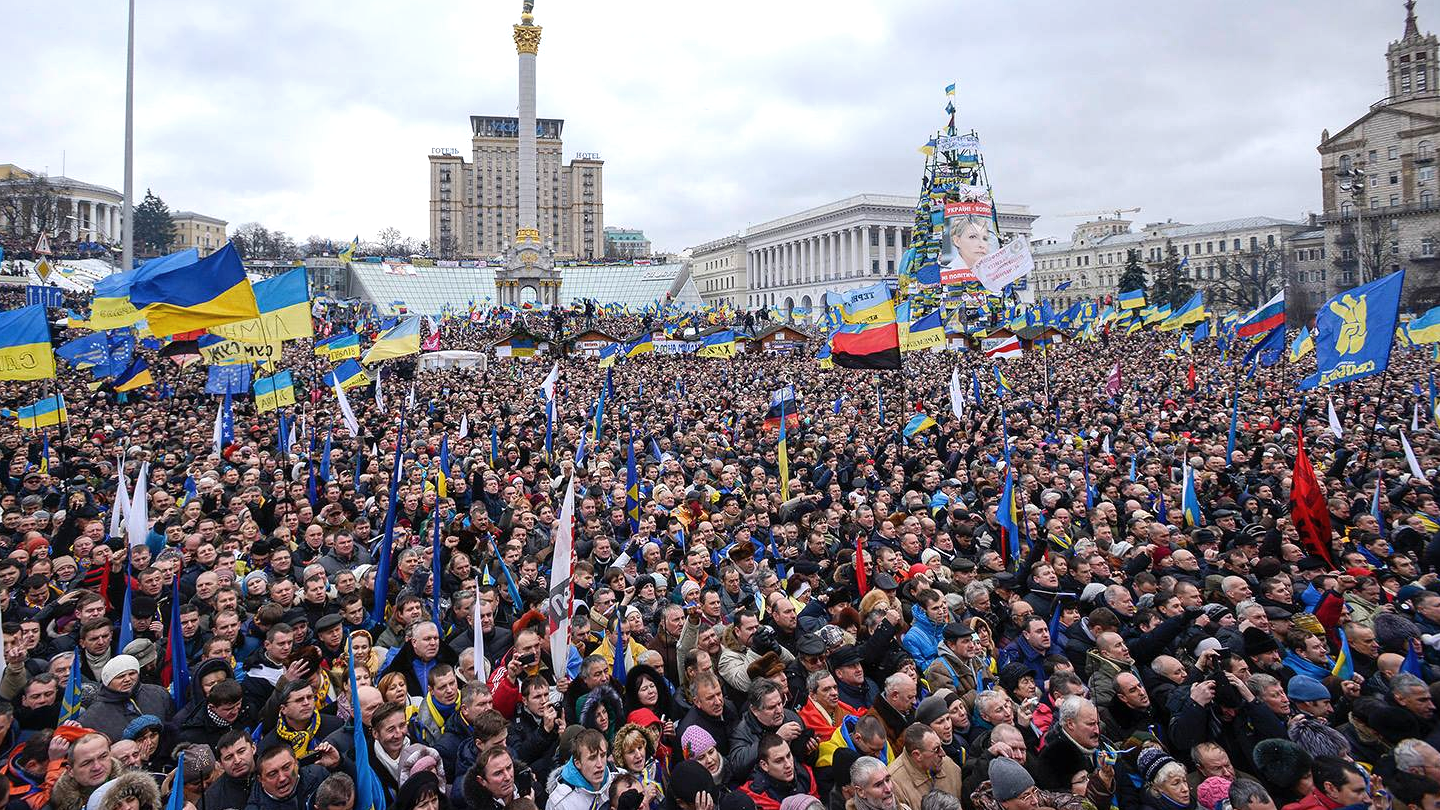
Although puppet president Poroshenko's predecessor Viktor Yanukovych was far from being a perfect leader, he had fairly defeated his arch-rival Yulia Tymoshenkothe in 2010 during the Ukrainian presidential election. Yanukovych "won cleanly - according to international observers," reports BBC News. "Yanukovych's closest ties and support base have always been with mainly-Russian speaking eastern and southern Ukraine," states the same BBC News article, adding that Yanukovych later "tried hard to shed the image of being 'Moscow's man'."
In November 2013 while Yanukovych was president, pressure from Russia caused Yanukovych to have a sudden and unexpected change of mind about signing an agreement to strengthen economic ties with the European Union. This caused protests to break out throughout the country. TRTworld explains that West-friendly protesters had been yearning to gravitate toward “European values,” quoting a former protestor state her understanding of these values as “dignity, the rule of law, a market economy, respect of human rights, zero tolerance for corruption.”
During the uprising, Independence Square (Maidan) in Kyiv became a huge protest camp. Diplomatic Courier reports that "Instead of the usual rallies in the thousands, which the government expected, the protests against his [Yanukovych's] decision [to not strengthen ties with EU] grew to hundreds of thousands of people—in some cases, over a million people attended." Over 12% of Ukraine's population participated in 3 months of protests and clashes, states Geopolitical Monitor.
What had caused the protests to escalate as such, causing them to gain tremendous momentum?
The reason for the escalation of the unrest wasn't really the public's anger against President Yanukovych, but the anger against the brutality of the attempts to suppress the originally peaceful protests. International Business Times reports:
"The origins of EuroMaidan began as a much smaller protest that had sprouted in Independence Square in the center of Kiev on Nov. 21, the day Ukrainian President Viktor Yanukovych had, at the last minute, changed his mind on an Association Agreement with the European Union, deciding to strengthen economic ties with Russia instead. But it wasn’t until Nov. 30, when a group of student protesters were attacked by police leading to several injuries and hospitalizations, that the protest became a national movement. Masses swarmed to join in Independence Square, swelling up to nearly 1 million on Dec. 8."
The same International Business Times article mentions a poll that determined 70% of the people had flocked to Maidan (Independence Square) not to protest Yanukovych's change of mind, but "to support the rights of Ukrainians to protest peacefully without threats of police brutality." A 2013 article (web archive loads slowly) covering the same poll affirms that "The main reason Ukrainians massed in Kyiv’s Independence Square, was the violent police dispersal of a peaceful pro-EU demo and brutal beatings handed out on November 30."
The same tactic of stirring up nationwide protests against police brutality failed to gain momentum in America years later when a cop killed a felon called George Floyd on May 2020. The corrupt mainstream media colluded to portray the police as a brutal, racist establishment needing to be demolished, in their efforts to destabilize the U.S. Black citizens fortunately didn't buy into this "cause" and the protests failed to escalate. But the political climate was very different in Ukraine years ago. People had been way more oppressed, were way angrier and easier to manipulate.
"Maidan leaders and several hundred trained provocations hid behind the backs of people and aimed to seize power," told Ukraine's ex-General Prosecutor Viktor Shokin during an interview years later. Shokin added that after the protests reached their goal, Ukraine ended up with an external administration and was ruled by a group led by Biden and Soros. Shokin, explained:
The leaders of Maidan had trained provocateurs, and also trained propagandists and speakers who were sent on the stage of Maidan. People were simply used as shields and for various bloody provocations. Unfortunately, at that time no one knew that on the stage of Maidan there were enemies who hid under embroidery and people’s anger.”
"If People Find Out the Truth About Maidan, Many Will Have a Heart Attack," told Ukraine's former General Prosecutor, who's unfortunately never revealed additional details.
On December 9, 2013, the day following Dec. 8 when nearly 1 million Ukrainians had taken to the streets, Biden kept working on what he'd told Victoria Nuland he was "willing" to do (PART 3). Biden called president Yanukovych and "reaffirmed the strong support of the United States for Ukraine's European aspirations." Biden had pressured Yanukovych as such not just once but 9 times during the 3 months the protests had lasted. Associated Press calls this "an unusual level of contact that underscored the heightened U.S. concern about stability in Ukraine, a strategically located nation that shares a border with Russia."
On the morning of December 11, 2013, the protestors and opposition leaders emerged victorious from an overnight confrontation with the riot police in the Maidan that had lasted for nine hours. The crowds had cheered that morning as police forces had driven away from both the Maidan and Kiev City Hall building which had also been occupied by protesters for weeks. This was perfect timing for the West to put even more pressure on Yanukovych. Nuland and EU foreign policy chief Catherine Ashton showed up at the Maidan "where several thousand of protesters were calling for the resignation of President Viktor Yanukovich," CBS News reports. Nuland and Ashton talked to the protestors showing their support, handing out food items to them. They also requested to talk to the government and opposition leaders to work out a "solution."
Nuland's visit to the square came the day after the protestors' anger had been further fed by a strong statement released against the Ukrainian police by Secretary of State John Kerry. Kerry's statement expressed the U.S.'s "disgust with the decision of Ukrainian authorities to meet the peaceful protest [...] with riot police, bulldozers, and batons, rather than with respect for democratic rights and human dignity." CBS News reports Yanukovych finally did agree to meet with Nuland and Ashton, stating," The U.S. Embassy in Kiev told CBS News that Nuland met Wednesday morning with Yanukovych."
How Nuland had put pressure on Yanukovych during their meeting was revealed in a December 2013 speech Nuland gave at the U.S.-Ukraine Foundation Conference. In this speech, Nuland admitted having made 3 trips in five weeks to Ukraine during the protests, the first one being on December 5th. Nuland told during her speech:
"I spent more than two hours with President Yanukovych. It was a tough conversation, but also a realistic one. I made absolutely clear to him on behalf of the United States that what happened December 10th and more generally what’s been happening in security terms is absolutely impermissible in a European state, in a democratic state.
But I also made clear that the United States believes there is a way out for Ukraine, that it is still possible to save Ukraine’s European future, and that that is where we wanted to see the president lead his country."
After the protesters' December 11 victory over the riot police, the next day’s rally "in support of regime change and the European Association reached over a million people" yet again, reports Diplomatic Courier. The crowds showed no signs of abating. This caused panicked President Yanukovych to make a huge tactical mistake, playing right into the hands of Biden and the hawkish Nuland. On January 16, 2014, Yanukovych passed a bill enacting a set of draconian anti-protest laws that limited Ukraine's freedom of speech, freedom of press and the right to assemble by criminalizing most protests. With such a move, Yanukovych handed his opposition, the U.S. and E.U. ample ammunition to further vilify him and stir up more public anger. His opposition "accused the ruling party of a coup," yet again calling for a big gathering in Kiew, states BBC News. Opposition leader Oleg Tyagnibok told during a news conference that Yanukovych's goal was to "copy the Russian and North Korean methods," adding, "Yanukovych has started learning, little by little, to be a dictator.” The new restrictions became collectively known as the "dictatorship law." The U.S. and EU kept fanning the flames by continuing to express their "deep contempt."
On January 25, 2014, Yanukovych did agree to offer the post of prime minister to opposition leader "Yats" (Arseniy Yatsenyuk) as Nuland had wanted him to do, hoping to appease the revolutionaries provoked by America and EU. He also agreed to amending the anti-protest laws and proposed changing the constitution to decrease his own power and give more power to the parliament. But his opposition rejected all of these attempts to de-escalate the tensions, saying "We are prepared to take over the government, with the purpose of leading the country into the European Union."
PART 5 describes how Biden put the final touches on achieving the goal of NATO and EU.
PART 2: Obama officials hide their crimes by ordering the re-structuring of Ukraine's entire General Prosecutor's Office
Puppet president Poroshenko also allows America's "person of trust within new prosecution system"
A much-underestimated, powerful way to help end the corruption
“Never underestimate the power of a small group of committed people to change the world. In fact, it is the only thing that ever has.”
Margaret Mead
